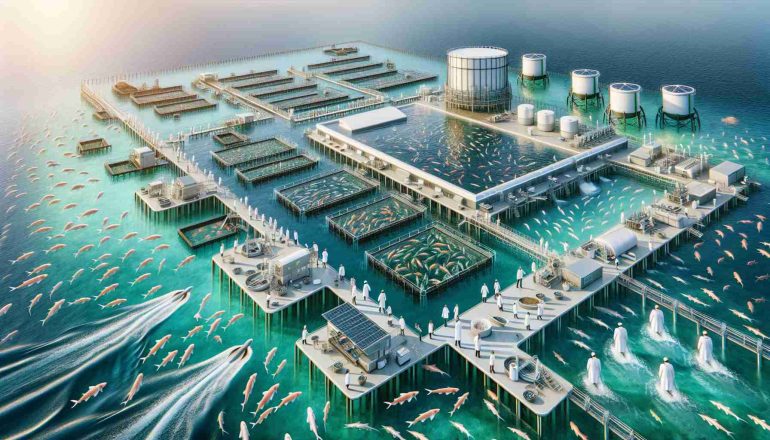- Abu Dhabi is launching a sustainable aquaculture project using innovative techniques focused on traditional fish farming.
- The initiative uses floating sea cages and underwater cameras instead of AI-driven systems.
- The project aims to enhance food security, reduce pressure on natural fish stocks, and support economic growth.
- Key challenges include balancing production efficiency with environmental sustainability and addressing community concerns.
- The initiative could face environmental risks and potential resistance from local communities.
Main AI News:
Abu Dhabi is setting a new standard in sustainable aquaculture practices with a groundbreaking initiative that moves away from traditional reliance on artificial intelligence. This project focuses on revitalizing conventional fish farming methods with a commitment to environmental sustainability.
Located off the southeastern coast of Delma Island in the Dhafra region, the initiative is dedicated to conducting scientific research on local fish species using innovative floating sea cages. The main objective is to develop environmentally sound procedures for cultivating marine life, aiming to reduce the strain on natural fish stocks, combat the effects of climate change, and enhance food security in response to the growing demand for seafood.
What distinguishes this project from typical aquaculture ventures is its intentional decision to forgo advanced AI-driven data collection systems. Instead, the initiative utilizes underwater cameras to monitor fish behavior and optimize feeding strategies. A sophisticated data transmission, storage, and analysis platform further ensures streamlined and effective operations.
Aligned with government priorities to promote the development of marine aquaculture, this project highlights the significant economic and environmental benefits of sustainable fish farming practices. The initiative exemplifies a forward-thinking approach to marine conservation and economic growth through strategic site selection guided by hydrodynamic modeling and comprehensive surveys.
However, the project also faces challenges, particularly in balancing production efficiency with environmental sustainability. Concerns about floating sea cages and their potential impact on marine ecosystems and local fishing communities may arise.
On the positive side, this project boosts sustainability by emphasizing traditional fish farming methods while integrating innovative techniques. It strengthens food security by addressing the rising demand for seafood in Abu Dhabi, easing the pressure on natural fish stocks. Furthermore, the development of marine aquaculture contributes to economic diversification and job creation in the region.
Nonetheless, potential drawbacks include environmental risks, such as water pollution and ecosystem disruption, if fish farming activities are not managed effectively. Local fishing communities and environmental groups concerned about the project’s impact on their livelihoods and the surrounding environment may also resist.
Conclusion:
This initiative represents a significant shift in the aquaculture market, highlighting a growing trend toward sustainable practices prioritizing environmental stewardship and long-term resource management. For the market, this means increased emphasis on innovation in traditional sectors, potential growth in eco-friendly technologies, and new opportunities for economic diversification in regions looking to balance environmental and economic interests. However, success will depend on effectively managing environmental impacts and engaging with local communities to mitigate resistance.

